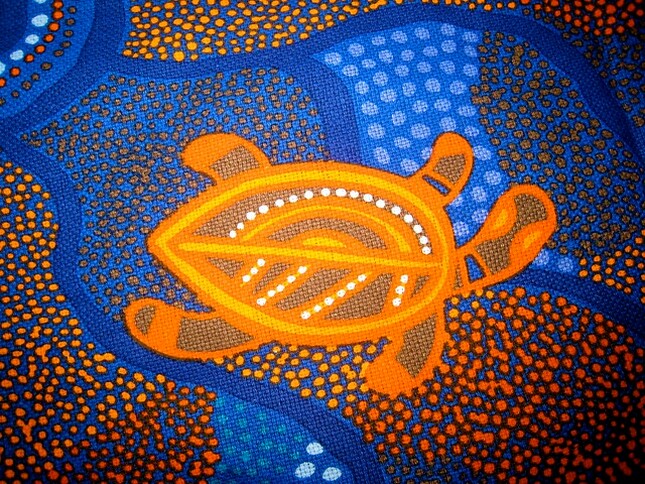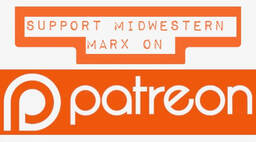|
11/17/2021 The National Question: A Case Study of Canadian Residential Schools. By: Dominique Panko & Dyson PankoRead NowThe workers therefore combat and will continue to combat the policy of national oppression in all its forms, from the most subtle to the most crude - Joseph V Stalin We acknowledge that we are settlers on Treaty Six Territory. This land is and has always been, the territory of the Cree Nation and the Homeland of the Metis people. We reaffirm our relationships with one another and hope to elevate the voices of indigenous leaders such as Cindy Blackstock and celebrate the leadership of the Cowesse First Nation in this article. Language Warning: The term “Indian” is used sparingly in this article as a historical term. A root concern of Marxists is national self-determination, as communists in the plains of Turtle Island (Saskatchewan), we must understand the national question in reference to the indigenous nations. The settler-colonial project of assimilation is to disrupt the national characteristics of the indigenous nations in order to prevent their national self-determination we as Marxist seek to uphold. We will explore the strategy of family disruption as a means of national oppression through the residential schools, 60s scoop, foster care, and child welfare system. And the contemporary struggle of the Cowesse First Nation to regain sovereignty over their community and assert their right and capacity for self-determination. The National Question, as articulated by Stalin, has special significance for those of us living on stolen lands in Turtle Island as Indigenous communities assert their sovereignty and reclaim their intrinsic right to raise their own children and kin. In Marxism and the National Question Stalin defines for our purposes the nation "A nation is a historically constituted, stable community of people, formed on the basis of a common language, territory, economic life and psychological make-up manifested in a common culture " This definition can be broken into four essential parts: 1. Language; 2. Territory; 3. Economic cohesion; 4. Culture. These characteristics of the First Nations of Turtle Island have been under relentless attack by the Settler state, First, with the dispossession of the land stripping the traditional territory away from the Indigenous people, the elimination of the bison removing the traditional forms of self-reproduction of the Plains People's, in other words, their common economic life, the purposeful cultural genocide by removing children from the nation's care and prohibiting them from speaking their mother tongue and practicing their cultural Canada has a long and shameful history of assimilation that reeks of genocidal intention, even if the Federal Government refuses to name its actions as “genocide”. Anthony Hall in “A National or International Crime? Canada's Indian Residential Schools and the Genocide Convention.” writes that the residential school system was an “assault on whole groups with the intent to eliminate them as distinct peoples within the human family” (Hall 73). Between the late 1800s and the mid-1990s, over 150,000 Indigenous children were kidnapped and placed in church-run, and Federally instituted boarding schools (Wilk et al. 2). While on paper these institutions were labeled “schools”, in practice they were tools of colonialism with the express intention to “kill the Indian in the child” (McDougall). By eradicating Indigenous culture, kin connections, and language, the Canadian Department of Indian Affairs hoped for a final solution: a complete disruption of National Sovereignty. The strategies used in Canada to oppress and murder Indigenous people are not unique, Hall called the style of colonization used by European settlers in Canada “the most pervasive, longstanding, and severe impetus to genocide” (73). Looking at Stalin’s four characteristics of a nation, we can see how closely tied the Federal Government of Canada’s removal, abuse, and state-sanctioned murder of Indigenous children is to the attempted elimination of First Nations. Wilk, Piotr, et al. in their article “Residential Schools and the Effects on Indigenous Health and Well-Being in Canada-a Scoping Review” write that “The residential school system was intended to eradicate the language, cultural traditions and spiritual beliefs of Indigenous children in order to assimilate them into the Canadian society” (2). Unfortunately, the barriers to Indigenous nation formation and maintenance implemented by the Canadian Federal Government did not stop with the closure of the last residential school in the late 1990s. Children, the most vulnerable in our society, continued to be and still are, themselves made into the frontline of Canada’s war against Indigenous Sovereignty. As support for the residential school system began to wane after World War two, the child welfare system picked up the slack. In the 1960s the infamous “60’s scoop” disrupted First Nations families by removing children from their communities, and placing them with white settler families (Amir 104). By virtue of these foster care placements, Indigenous children had limited access to their families and kin relations. They also were prevented from learning their languages, religion, and cultural practices. Though the “scoop” should be considered a distinct event, it was ultimately the mere beginning of 60 more years of Indigenous children being apprehended disproportionately and further distanced from their nations. The move towards foster care gave a makeover to Canada’s genocidal practices, allowing a system, not all that different from residential schools to continue with the image of protecting so-called at-risk children. In 2007 there was a class-action lawsuit filed by the First Nations Child and Family Caring Society of Canada and the Assembly of First Nations alleging that the Federal Government of Canada was providing inadequate and inequitable child welfare services to Indigenous Children (Blackstock 285). In 2016, almost ten years after the complaint was filed and no less than eight attempts by the Canadian Government to have the case dismissed, “the Canadian Human Rights Tribunal substantiated the complaint and ordered the Canadian Government to cease its discriminatory conduct” (Blackstock 285). The importance of this determination should not be understated. This landmark case paved the way for future Indigenous nation rebuilding by drawing public attention to the need for culturally appropriate foster care placements. Children are the future of any nation, and in 2020 for the first time in modern Canadian history, children started being returned. The Saulteaux band of the Cowesse First Nation, located in what is routinely called southern Saskatchewan, in 2020 asserted their right to manage the care of children and families in need within their community (Dangerfield). The Cowesse First Nation relied on Bill C-92 to reclaim their jurisdiction over child welfare on their Nation (Dangerfield). What this means for the future of First Nations sovereignty is yet to be seen, however, we believe this is a historically significant step in the direction of decolonization which, if capitalized on, could spur the beginning of the land back movement. Following a Marxist analysis, the First Nations of Turtle Island are oppressed nations. And thus their liberation, self-determination, and complete sovereignty are key areas for solidarity and the proletarian struggle. If we seek freedom for the international working class we must seek freedom for all nations. For us settlers and members of the Canadian nation Lenin asks and answers a pertinent question "Let us consider the position of an oppressor nation. Can a nation be free if it oppresses other nations? It cannot." And thus the settler nation of Canada cannot be considered free until all the oppressed Indigenous nations are freed! Works Cited Amir, Ruth. “Cultural Genocide in Canada? It Did Happen Here.” Aboriginal Policy Studies (Edmonton, Alberta, Canada), vol. 7, no. 1, 2018, pp. Aboriginal policy studies (Edmonton, Alberta, Canada), 2018–04-03, Vol.7 (1). Dangerfield, Katie. “Cowessess First Nation Becomes 1st to Control Its Child Welfare System. Here's How It Works.” Global News, Global News, 7 July 2021, globalnews.ca/news/8005532/cowessess-first-nation-child-welfare-law/. Hall, Anthony J. “A National or International Crime? Canada's Indian Residential Schools and the Genocide Convention.” Genocide Studies International, vol. 12, no. 1, 2018, pp. 72–91. McDougall, Robert L. “Duncan Campbell Scott.” The Canadian Encyclopedia, 11 Aug. 2008, www.thecanadianencyclopedia.ca/en/article/duncan-campbell-scott. Stalin, Joseph Vissarionovich. “Marxism and the National Question.” Marxism and the National Question, www.marxists.org/reference/archive/stalin/works/1913/03a.htm. Wilk, Piotr, et al. “Residential Schools and the Effects on Indigenous Health and Well-Being in Canada-a Scoping Review.” Public Health Reviews, vol. 38, no. 1, 2017, p. 8. AuthorDominique Panko and Dyson Panko are siblings living on Turtle Island, colonially called Canada, who are self-taught Marxist-Leninists passionate about education and theory. Archives November 2021
0 Comments
Leave a Reply. |
Details
Archives
July 2024
Categories
All
|


 RSS Feed
RSS Feed